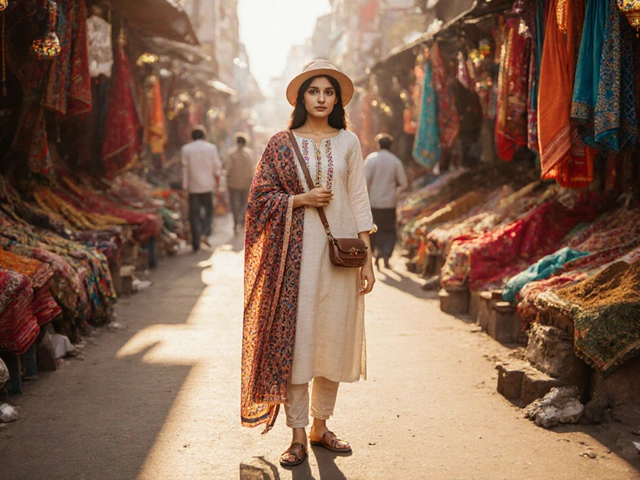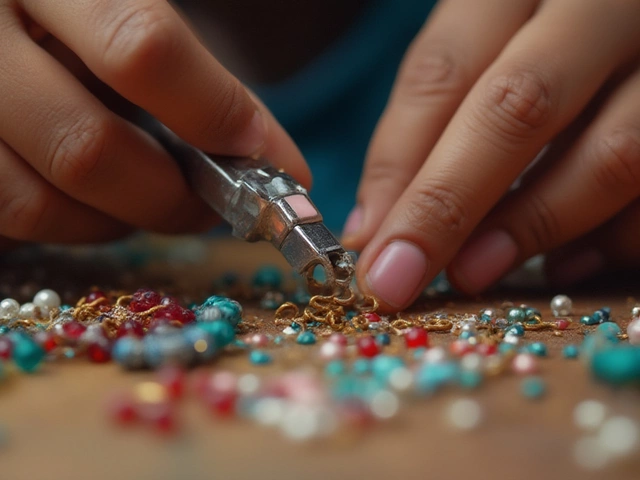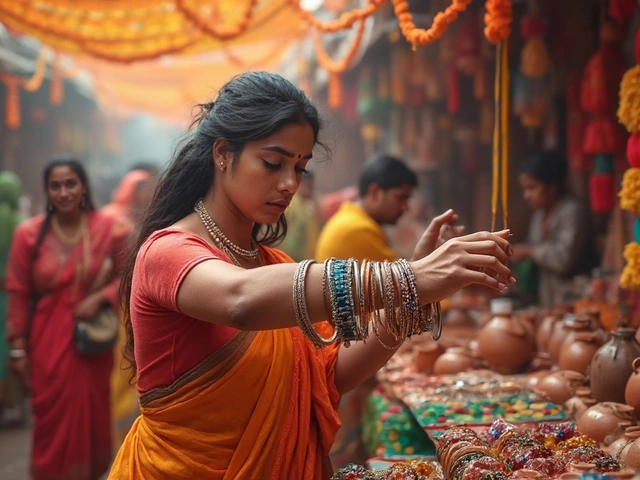American Trends Shaping Indian Jewellery Styles
Ever wondered why you’re seeing more chunky chains, mixed metals, and minimalist designs in Indian stores? That’s the ripple effect of American fashion reaching our shores. In the last few years, U.S. runway shows, pop culture icons, and street style have nudged Indian jewellery designers to experiment beyond the classic motifs.
Here’s a quick guide on the key trends that have crossed the ocean and landed in Indian jewellery collections. Grab a cup of chai and let’s break it down.
Chunky Chains and Layered Looks
American streetwear loves bold, oversized chains. Think thick gold or silver links that make a statement without a single pendant. Indian designers are now offering similar pieces, but they often add a tiny traditional charm – a lotus, an elephant, or a tiny peacock feather – to keep the ethnic vibe alive.
Layering is another big thing. In the U.S., people stack multiple chains of different lengths and finishes. In India, you’ll see a gold chain paired with a silver one, or a delicate rope chain combined with a chunky link. The result is a look that feels modern yet still rooted in heritage.
Mixed Metals and Matte Finishes
Back in the day, gold ruled every Indian jewellery box. Today, mixing gold with silver, rose gold, or even blackened metal is totally cool. The American influence brings a preference for matte finishes, brushed textures, and subtle tones that contrast with high‑shine traditional pieces.
If you’re buying online, look for product photos that show the metal’s texture up close. A matte gold pendant paired with a polished silver chain can become a conversation starter at any gathering.
These mixed‑metal pieces also work well with everyday outfits – from a casual kurti to a formal saree – because they’re versatile enough to match any color palette.
Minimalist Designs that Speak Quietly
Less is more in many American design houses. Minimalist jewellery means clean lines, tiny stones, and simple shapes. In Indian collections, you’ll now find tiny diamond studs shaped like clouds, thin gold bands with a single tiny pearl, or a plain stainless‑steel cuff that echoes a classic cuff but feels lighter.
These pieces are perfect for office wear or a quick coffee date. They add a touch of sparkle without stealing the spotlight, which is exactly what the trend is all about.
When you shop, check the product description for terms like “minimalist,” “thin profile,” or “delicate.” That usually signals a design inspired by the American aesthetic.
How to Mix American‑Inspired Pieces with Traditional Looks
Don’t feel you have to choose one side or the other. Pair a chunky chain with a traditional Rivaayat‑style necklace for an eclectic vibe. Combine a matte black bangle with a classic silk saree, or wear a minimalist gold ring alongside a heavy Kundan set.
The secret is balance – let one piece dominate and let the others complement. If you’re unsure, start with a single American‑inspired item and build around it.
At RH Jewellers, you’ll find a curated selection that blends these trends with authentic Indian craftsmanship. Browse the “American Trends” section to see how global style meets our local heritage, and pick pieces that feel true to you.
So next time you’re scrolling through a social feed and spot a cool chain or a sleek cuff, you’ll know it’s part of a larger wave that’s reshaping Indian jewellery. Embrace the mix, try something new, and let your style tell a story that bridges two worlds.
Exploring the Popularity and Designs of Nose Rings in America
Nose rings have become a prominent fashion statement among Americans, transcending cultural and generational boundaries. This article delves into the current percentage of Americans wearing nose rings and the diverse styles that captivate both men and women. We explore historical influences and modern-day inspirations shaping the designs. Additionally, readers will discover tips for selecting and caring for a nose ring that suits individual style preferences.





